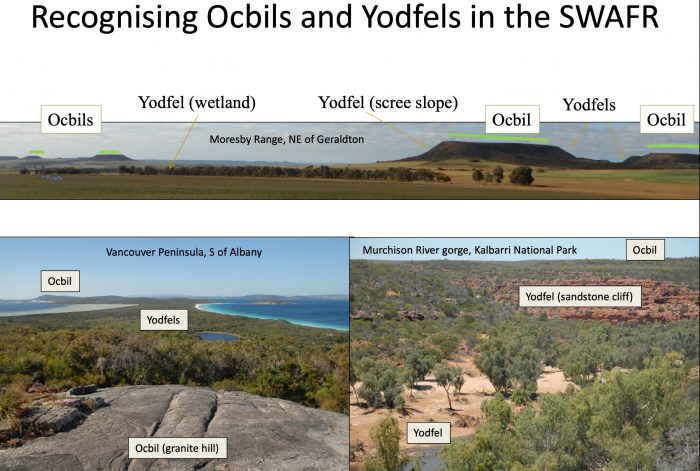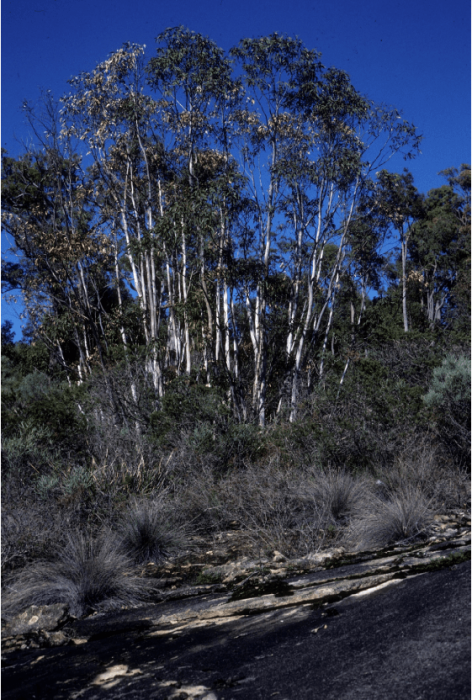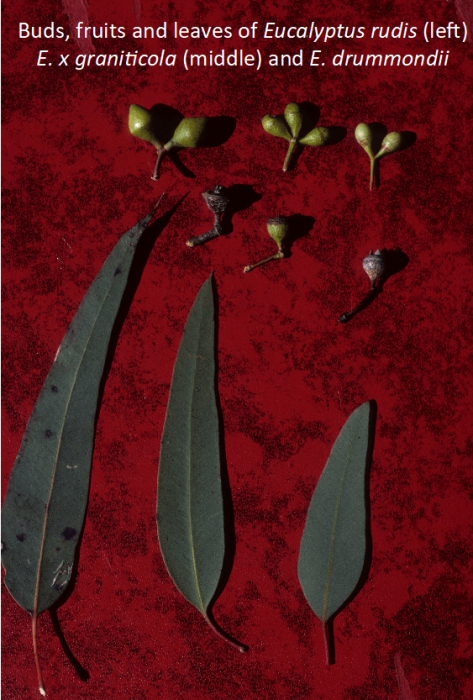
Natural hybridization between species has been known since the discovery of sex in plants in the late 1600s. Today, with the benefit of DNA technology, we now know that hybridization occurs in at least 40% of plant families. Orchids show the highest propensity to hybridize in nature, a fact that has not escaped the attention of orchid growers worldwide.
A range of evolutionary and conservation outcomes are possible when natural hybridization occurs. Sometimes, new species are formed, in an instant when doubling of chromosome numbers occurs. More often, occasional hybrid plants appear, often in transitional habitats occupied by parental species, and especially where some form of disturbance has opened up vegetation and reduced competition for light and nutrients. If the parental species are closely related, first-generation hybrids backcross with their progenitors, creating a genetic bridge that may lead to swamping of one parent’s genome by another. This latter process becomes problematic when the recipient of such introgressed genes is a rare and endangered plant.
Conservation managers consequently need to have the tools and predictive theory that enable accurate assessments of the benefits and risks associated with the occurrence of hybrids in nature. DNA sequencing and careful study of the features of potentially hybridizing species enable recognition of first-generation hybrids, hybrid swarms, and novel hybrid species. Because the development of relevant theory has lagged behind these diagnostic innovations, however, conservation managers have to examine every case of potential hybridization to ascertain the benefits and risks of the process for each group of plants or animals.

Image courtesy Stephen D. Hopper
A new way to ascertain rates of natural hybridization is to consider a landscape predictive perspective. Over the past decade, it has become clear that old, climatically buffered, infertile landscapes (Ocbils) are home to many evolutionary and ecological processes at variance to those seen on young, often-disturbed fertile landscapes (Yodfels). Ocbils are found predominantly in the Southern Hemisphere, where exceptional preservation over tens of millions of years has occurred. These ancient landforms have been located close to moderating oceanic climatic influence for similar periods as the Earth’s continental plates drift. Their soils are deeply weathered, to the point where phosphorous, not nitrogen, has become the primary nutrient deficiency for plants.
Ocbils are relatively rare but occur in 12 of the 35 Global Biodiversity Hotspots, richest in threatened plants found nowhere else. The subdued uplands (granite outcrops, lateritic mesas, high sandplains) of the South West Australian Floristic Region (SWAFR) include many Ocbils. Similar landscapes occur in the Greater Cape of South Africa, as well as in Brazil, Madagascar, eastern Australia, and many other countries.

Image courtesy Stephen D. Hopper
A study of the abundance of natural hybrids in the SWAFR based on a combination of herbarium and field studies revealed globally rare occurrences of hybridization, hybrid speciation, and introgressive backcrossing. These processes appear to be more common in Yodfels such as places which were glacial or periglacial in the Last Glacial Maximum 20 thousand years ago. Much of Eurasia, Canada, and the USA matches this description, as does more limited regional landscapes in Southern Hemisphere countries that are rich in Ocbils.

The single known long-lived individual of Eucalyptus x graniticola on a granite outcrop Ocbil SWAFR. Image courtesy Stephen D. Hopper
The paper describes one such case of an extremely rare eucalypt hybrid confined to a single granite outcrop Ocbil in the SWAFR. The hybrid is named Eucalyptus x graniticola. DNA studies and progeny tests have identified its parents as E. drummondii and E. rudis, two species that have evolved independently for millions of years, and grow in isolated stands within 5 km of E. x graniticola. There is no evidence that E. x graniticola has backcrossed with either parent. Nor does the plant appear to be a genetically stabilized new species. It is a long-lived single individual, persisting for hundreds if not thousands of years due to an underground woody rootstock.
Why should rates of hybridization, introgression, and hybrid speciation be reduced among Ocbil plants and animals? The prolonged persistence of Ocbils over tens of millions of years sets up a system of island-like terrestrial refuges where evolution in isolation is possible for very long periods of time. By the time environmental change enables previously isolated congeners from Ocbils to get close enough to hybridize, significant barriers to the production of fertile hybrid offspring come into play.

Image courtesy Stephen D. Hopper
In contrast, the widespread and rapidly dispersing plants of Yodfels will come into contact more often and hybridize often. This creates many more opportunities for introgression between species than occurs on Ocbils. Genetic swamping of threatened rare species is more likely, as is accelerated rates of new hybrid species emerging on Yodfels.
For conservation land managers, these observations and their consideration in the context of Ocbil Theory enable the use of landscapes as predictors of patterns of hybridization. Essentially, Ocbils are likely to have more isolated hybrid individuals that do not backcross as often and therefore threaten rare species by genomic swamping. Most such interactions among plant species are likely to occur in lowland Yodfels such as along watercourses, around lakes and the periphery of glaciers, along coastlines and in eroding mountainous terrain.
The formulation of the Reduced Hybridization Hypothesis for Ocbil organisms (plants and animals) needs cautious acceptance at this stage due to the absence of sufficient regional surveys of rates of natural hybridization, introgression, and hybrid speciation. Available data for the SWAFR, South Africa do not refute the hypothesis. A clear reduction in hybridization processes is evident in their Ocbil landscapes compared with their Yodfels, as well as for Yodfel-dominated regions including California, North-eastern USA, the US Great Plains, and Intermountain Regions, UK, Hawai’i, Australia’s Victoria and New Zealand.
If the Reduced Hybridization Hypothesis withstands future detailed scrutiny, conservation land managers will have a predictive tool that enables the focusing on Yodels of scarce resources dealing with the impacts of natural hybridization. By and large, Ocbils are best left alone and cared for in conservation reserves. They are evolutionary and ecological museums with extraordinary biodiversity displaying unusual attributes and processes about which we are just beginning to learn.
Published by Stephen D. Hopper
Centre of Excellence in Natural Resource Management, Albany, The University of Western Australia
These findings are described in the article entitled Natural hybridization in the context of Ocbil theory, recently published in the South African Journal of Botany (South African Journal of Botany 118 (2018) 284-289). This work was conducted by Stephen D. Hopper from the The University of Western Australia.









